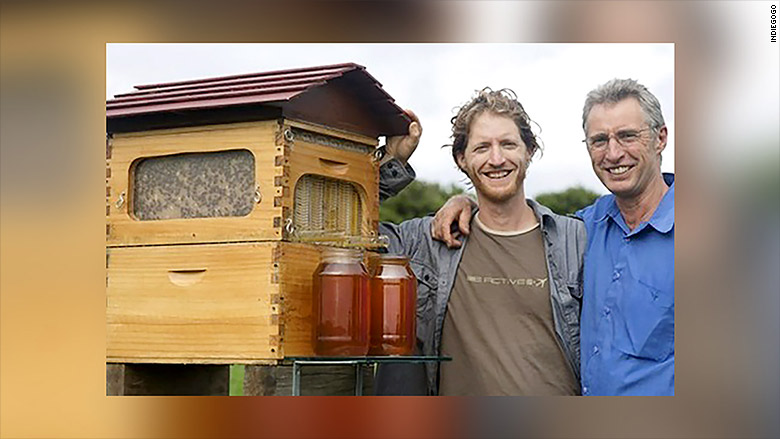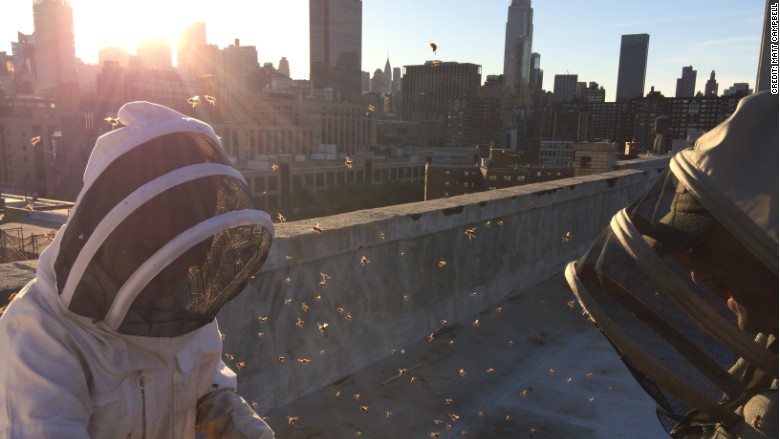
Turns out, lots of people want honey on tap. Nearly 30,000 people have contributed to the Indiegogo campaign for the Flow Hive, making it the most successful crowdfunding operation in the site's history.
Flow Hive has raised just over $10 million, with six days still left to go. The founders were originally trying for $70,000, which it reached in 477 seconds. More than 6,100 people paid $600 for the full hive, which is expected to start shipping in December.
Cedar Anderson and his dad Stuart worked on the concept for the last decade. The family has been keeping bees for generations, and Cedar started his first hive when he was just six years old.
Related: In Cleveland, sheep could be key to city's renewal
The Andersons, who live in Australia, say their method is good for the bees because it doesn't disturb them, and it's great for beginners -- there's no need to wear protective gear, smoke the bees to sleep or take apart the hive to harvest the honey. It's all done by flipping a switch, which activates a mechanism inside the hive, and fresh honey pours out of the tap.
"Of course, they still need to know what they're doing, but Flow Hive takes almost all of the work out of harvesting, which people wanting to get into beekeeping have rightly seen as a major obstacle in getting started," Cedar Anderson said.
But this separates the beekeeper from the bees, which is concerning to Andrew Cote, founder of the New York City Beekeepers Association. Beekeeping has also been in his family for generations, and he uses a traditional method that he says dates back 150 years.
"One does need to do hive inspections, check for disease, check for virility of the queen, and make sure that things are going well in the hive," he said.
While it's possible to see into the Flow Hive, it doesn't help if you don't know what to look for. If a disease in a hive goes undetected, for example, it doesn't impact just that colony -- it can affect hives within about a three-mile radius. In a dense city environment, that could mean many more infected hives.
"With any beehive, beekeepers need to check out how their hive is going and ensure their bees are happy and healthy," Cedar Anderson said. "There may still be a need to open up the box."
Related: New Pebble smartwatch raises $1M on Kickstarter in record time
Anderson recommends that people link up with local beekeeping groups to learn how to properly care for their bees.
Cote said membership in his beekeeping group has grown exponentially over the years, and he advises people to spend a good year learning, taking a course or joining an apprenticeship program before embarking on hive ownership.

"I'm concerned it could be like the Christmas puppy that people get and they lose interest in it," Cote said. "It's much easier to put a box of bees on the roof and forget about it." Still, he agrees that the more people who care about bees, the better.
"I'm not anti-beekeeping," Cote said. "At the same time, I don't think everybody needs to have a beehive."



